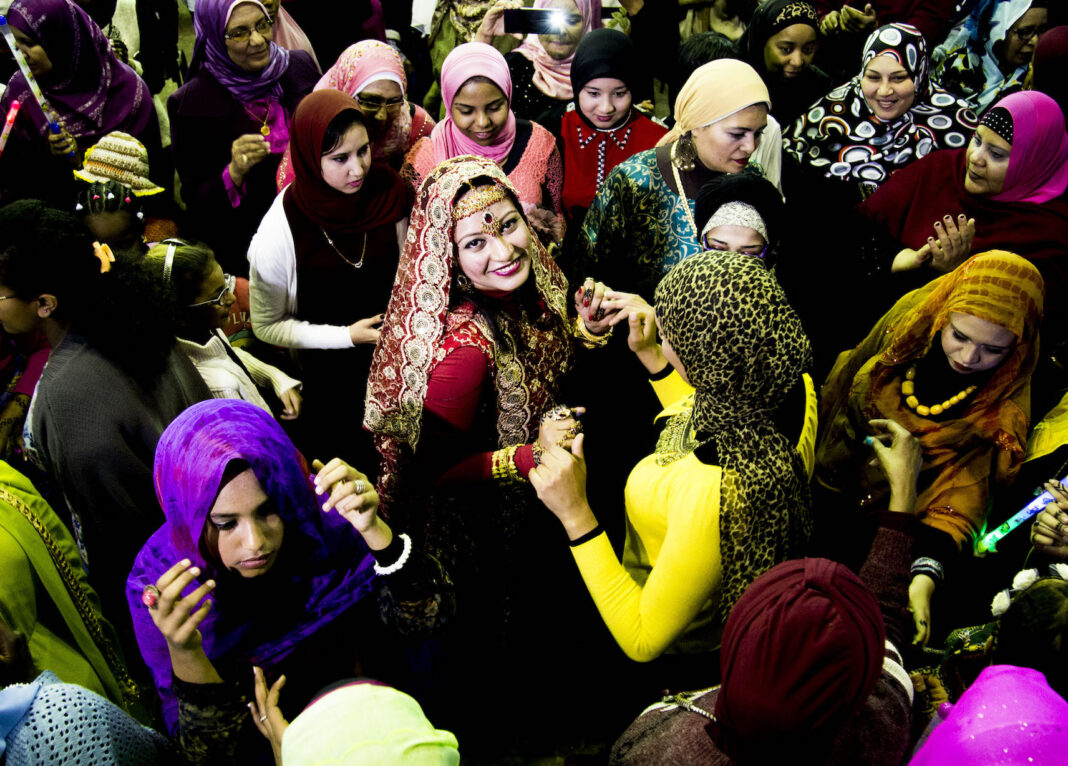In Egypt and across the Arab world, henna rituals—once sacred ceremonies imbued with spiritual meaning—have transformed into lavish, high-budget spectacles.
What began millennia ago as symbolic body art to ward off evil spirits has become a display of opulence, where glitter replaces traditional henna, elaborate cakes overshadow customary sweets, like kahk (festive cookies) and qatayef (stuffed pancakes), and social media trends dictate décor. This evolution reflects broader societal shifts, from the rise of influencer culture to the commercialization of tradition.
Ancient Roots: Henna’s Sacred Legacy
The use of henna in celebratory rituals dates back over 5,000 years in North Africa and the Middle East. Archaeological evidence suggests that ancient Egyptians used henna to dye hair and nails, with mummies displaying henna-stained fingertips, symbolizing protection in the afterlife. Similarly, in Yemen, brides adorned their hands and feet with intricate henna designs symbolizing fertility and prosperity.
By the 19th century, Egyptian henna parties (laylat al-hinna) became intimate, women-only gatherings. Family matriarchs mixed henna paste with rose water, applying designs while singing folk songs.
Post-World War II, urbanization and globalization introduced subtle changes to Egyptian social practices. Henna parties expanded to include male relatives, and professional artists began charging modest fees for intricate designs. By the 1990s, middle-class families might spend EGP 1,000 (USD 32) on venue rentals or hiring a munshidat (female singers).
“My mother’s henna party in 1985 was in my grandma’s living room,” says Salma Hassan, 45, from Giza. “They hired a local artist for EGP 50 (USD 2500), and my aunts cooked everything. The focus was on the henna itself, not the party around it.”
Today, the term “henna party” often feels like a misnomer. In Cairo’s upscale neighborhoods like the Fifth Settlement or Heliopolis, these gatherings resemble themed balls more than cultural rituals.
Many modern parties forego traditional henna designs. Instead, brides opt for temporary glitter tattoos or crystal embellishments. “About 30 percent of my clients now request ‘henna-free’ parties,” says event planner Nourane Khalil. “They want neon body paint or metallic stickers for Instagram photos.”
Event planning companies offer packages ranging from EGP 5,000 (USD 160) for basic décor to EGP 20,000 (USD 640) for premium themes like “Pharaonic Royalty” or “Desert Oasis,” complemented by extravagant costumes, decorations, giveaways and more.
Traditional homemade sweets have been replaced by gourmet catering, including sushi platters and molecular gastronomy. Tiered fondant cakes costing up to EGP 15,000 (USD 480) are now common.
This shift has sparked debates. Traditionalists argue that henna’s spiritual essence is being erased. “These parties are now about showing wealth, not honoring heritage,” says Um Samir, a 67-year-old henna artist.
Conversely, millennials defend the trend.
“Why can’t we blend old and new?” argues Yasmine Mohsen, 28. “My grandmother’s henna was beautiful, but I want mine to reflect my era.”
Egypt’s henna parties stand at a crossroads between preservation and reinvention. While glitter may gleam brighter than henna today, the ritual’s core—celebration of love and community—remains intact.


